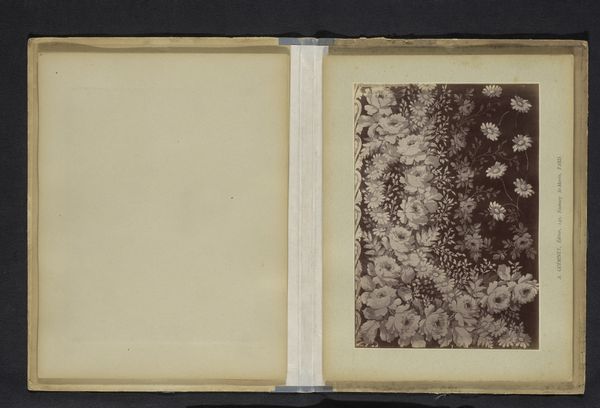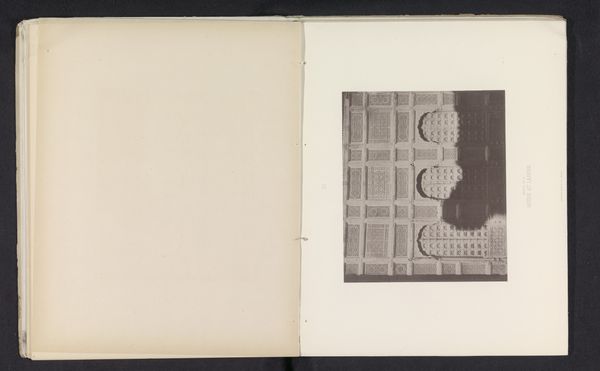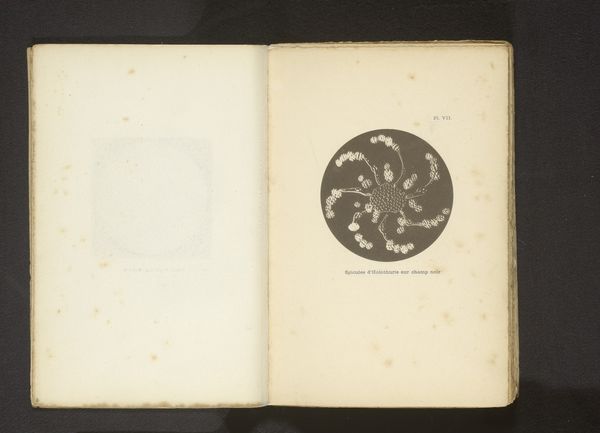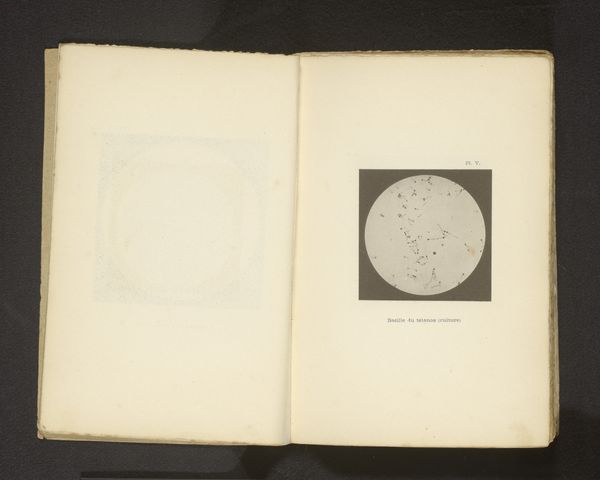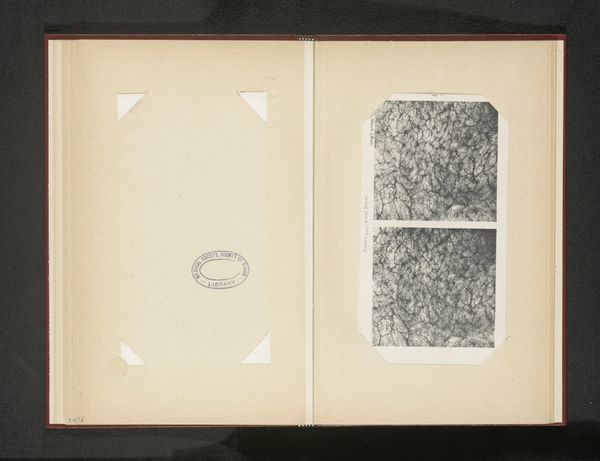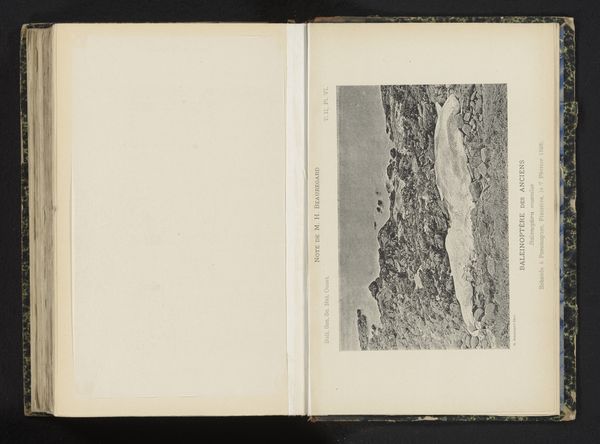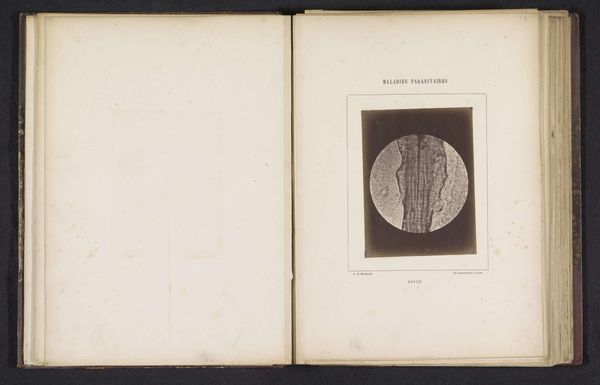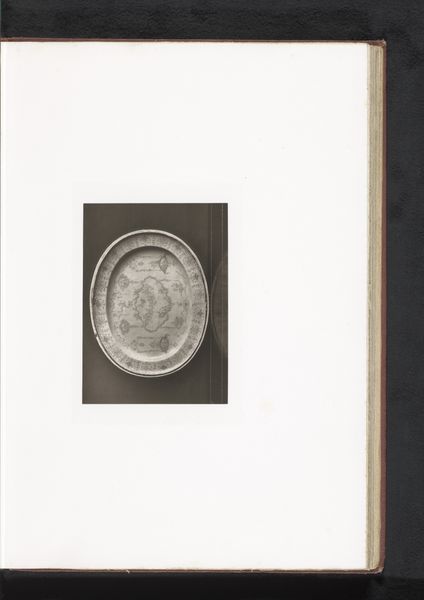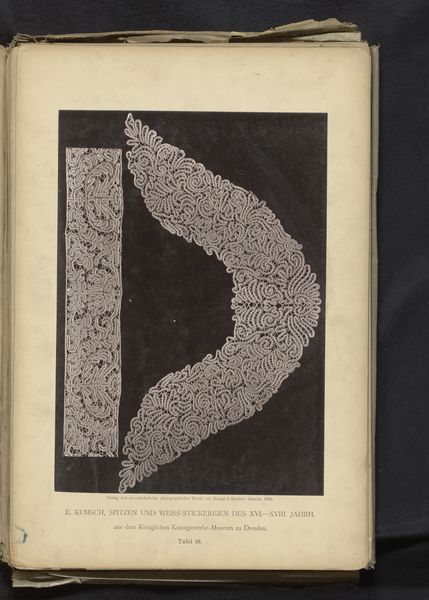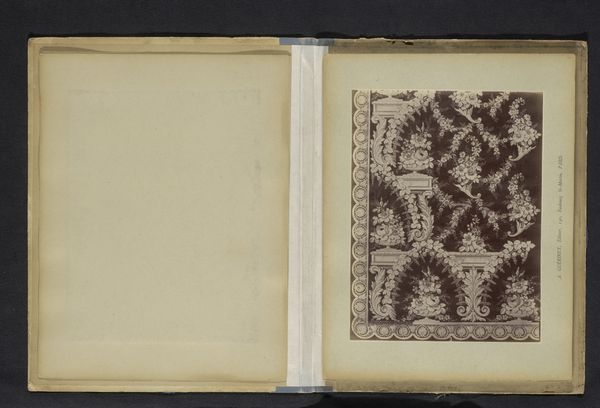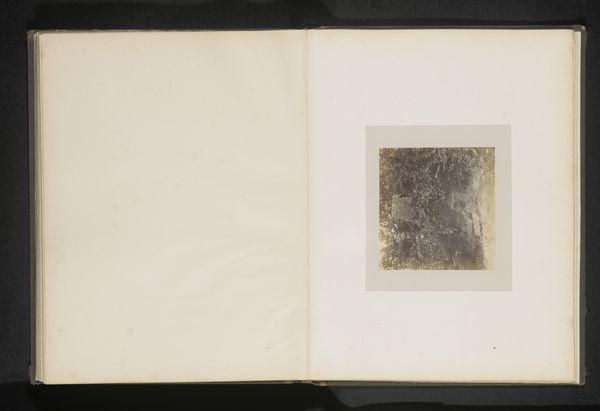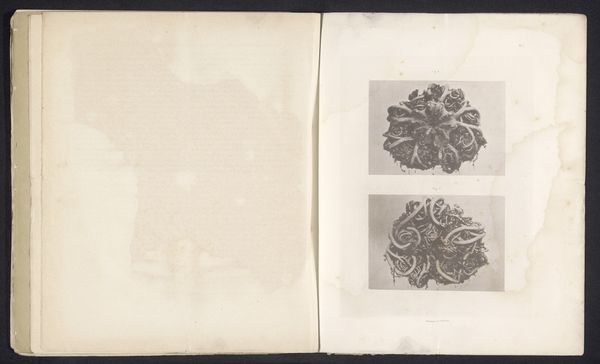
Kopie van een gedecoreerd raam van de Sidi Saiyyed Ni Jaali moskee in Ahmedabad before 1885
0:00
0:00
drawing, print, paper
#
drawing
#
homemade paper
#
script typography
# print
#
hand drawn type
#
personal journal design
#
paper
#
personal sketchbook
#
hand-drawn typeface
#
thick font
#
sketchbook drawing
#
islamic-art
#
delicate typography
#
design on paper
Dimensions: height 160 mm, width 233 mm
Copyright: Rijks Museum: Open Domain
Curator: Here we have "Kopie van een gedecoreerd raam van de Sidi Saiyyed Ni Jaali moskee in Ahmedabad," a print or drawing created before 1885. Editor: My first impression is one of intricate, almost dizzying detail. The complexity seems overwhelming at first glance. Curator: Indeed, the piece is dominated by the interplay of geometric forms, most obviously circles and what appears to be looping tendrils. These elements combine to generate a sensation of immense complexity but one rooted in clear formal rules. Editor: But the very act of copying suggests something deeper, beyond just the formal elegance. It’s easy to assume it was an act of cultural appropriation and speaks to colonialism and how artwork was treated during this era. Curator: Perhaps. Though such readings risk a kind of presentism, consider the formal problem: how can one capture the very essence of ornamentation through the constraints of the medium? The anonymous creator uses line-work and shape to create the overall decorative texture that resembles the carved original window. Editor: It makes you wonder if the artist was aware that by isolating and copying the architectural design, he might affect the viewer's perceptions? I can’t help but wonder who made this work and if he or she ever saw the windows and the social interactions of daily worshippers, which must be viewed within the original context in order to fully be understood. Curator: Your point on perception is astute. While the social function may elude the image, it forces us to reckon with its structure: observe the semi-circular shape with its delicate curves juxtaposed against denser elements. Editor: This print seems designed as much to invite study of geometrical precision and craft of architectural design in India as to evoke historical injustice. The historical implications remain essential. Curator: Undoubtedly. These tensions within the artwork are vital, offering the viewers an arena to challenge ideas about function and value in architectural spaces. Editor: Precisely!
Comments
No comments
Be the first to comment and join the conversation on the ultimate creative platform.
